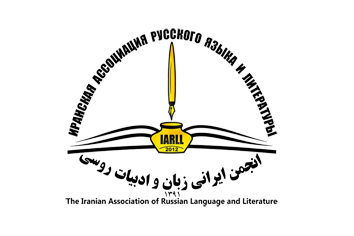M.Y. LERMONTOV'S CULTUROSOPHY: NORTH AND EAST IN THE POET'S ALLEGORICAL POEMS
DOI:
https://doi.org/10.52547/iarll.22.3Keywords:
M.Y. Lermontov's Poetry, Allegory, Symbolic Images, Culturosophy, West, EastAbstract
The article analyzes Lermontov's allegorical poems in connection with culturosophical problems. These are North, West and East (South) as the main forces of history. Usually interpreted as reflections of a romantic complex, they are read on the paths of historical and religious synthesis. The theme of the West was closed by the poet ("The Dying Gladiator"). The North–East axis became dominant as a desire to learn the spiritual foundations of the East and as an appeal to the "dear North" with its Christian values. The dramatic complexity of their interaction is analyzed in the allegorical plots of two meetings – of an oak Leaf with the South ("Leaf") and of a palm branch with the North ("Palestine Branch") – harmony of the traditional world and personal consciousness. As a result, the poems show the poet's creative possibilities in combining philosophy, religion and art.
Extended abstract:
The article aims to explore the allegorical poems of M. Lermontov, and their connection to the culturosophical theme of his late works. Y. Lermontov directly confessed his love for Russia, referring to it as the "dear North," and expressed a deep admiration for the "golden East" through a dozen allegorical poems. These works are filled with imaginative historiosophical reflections. The article focuses on three pivotal poems: "It's Lonely in the Wild North...", "Leaf", and "Branch of Palestine". The main forces of history in these verses are the subject of mental and creative comprehension and can be labelled by four concepts: the North (Russia), the West (Europe, particularly Italy and Scotland), as well as the East (the Middle East – the Holy Land, Arabia and Persia), continuing with the concept of the South (which predominantly includes the Caucasus as the closest region to the Muslim world). The article's main issue concerns the interpretation of history's primary meanings as the North, West, and East (South). Typically, these meanings are viewed as reflecting a romantic complex, depicting a solitary, suffering wanderer in the world. However, in this article, they are considered to be expressions of the poet's historiosophical reflections. This approach introduces the study's primary innovation. The article demonstrates how the theme of the West is explored in the poem "The Dying Gladiator". Lermontov's poetry shifted towards the North-East axis, with a focus on understanding the spiritual foundations of the East as well as invoking the Christian values of the "dear North". In his allegorical poems, Lermontov depicted the ideal world of the East through two symbols: the Pine and the Palm Tree in "In the wild north...". The article examines the intricate dynamics of their encounters, as portrayed through the allegorical narratives of two meetings: an oak Leaf with the South ("Leaf") and a palm branch with the North ("Branch of Palestine") – showcasing the sagacity and accord of a stable, traditional world that retains celestial reflections, in contrast to an isolated and singular self-awareness that has forsaken its communal roots and yearns for an idyllic existence. As a result, Lermontov's culturosophical poems demonstrate the poet's vast creative potential in developing a synthetic concept that merges philosophy, religion, and art. According to Grossman, the poet's untimely death deprived the world of his wisdom, which was already evident in his early works.
References
Гроссман Л. (1941). Лермонтов и культуры Востока // Литературное наследство. 1941. Т. 43. С. 673-744.
Дурылин С.Н. (1916). Россия и Лермонтов. (К изучению религиозных истоков русской поэзии) // Христианская мысль. Киев. Кн. 2 (февр.). С. 137-150.
Кошемчук Т.А. (2022). Иносказательные образы М. Ю. Лермонтова: к теме Запада и Востока в стихах поэта // Исследовательский журнал русского языка и литературы. 2022. Т. 10. № 2. С. 57-75.
Лермонтов М.Ю. (1959). Сочинения в 4 томах. Т. 4., М., Л. : Издательство АН СССР. 826 с.
Попов А.В. (1954). Лермонтов на Кавказе. Ставрополь, Ставропольское книжное изд-во. 222 с.
Bibliography
Grossman (1941). L. Lermontov i kul'tury Vostoka // Literaturnoe nasledstvo. 1941. T. 43. S. 673-744.
Durylin S.N. (1916). Rossiya i Lermontov. (K izucheniyu religioznyh istokov russkoj poezii) // Hristianskaya mysl'. Kiev. Kn. 2 (fevr.). S. 137-150.
Koshemchuk T.A. (2022). Inoskazatel'nye obrazy M. YU. Lermontova: k teme Zapada i Vostoka v stihah poeta // Issledovatel'skij zhurnal russkogo yazyka i literatury. 2022. T. 10. № 2. S. 57-75.
Lermontov M.YU. (1959). Sochineniya v 4 tomah. T. 4., M., L. : Izdatel'stvo AN SSSR. 826 s.
Popov A.V. (1954). Lermontov na Kavkaze. Stavropol', Stavropol'skoe knizhnoe izd-vo. 222 s.
Downloads
Published
How to Cite
Issue
Section
License
Copyright (c) 2023 Issledovatel'skiy Zhurnal Russkogo Yazyka I Literatury

This work is licensed under a Creative Commons Attribution 4.0 International License.
![]()
"Creative Commons Attribution 4.0 International (CC-BY 4.0)"


